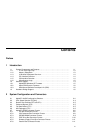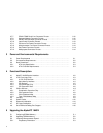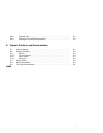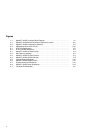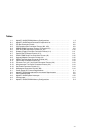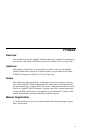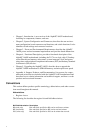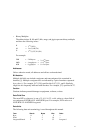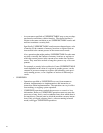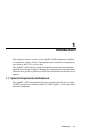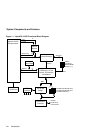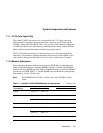xi
• Binary Multiples
The abbreviations K, M, and G (kilo, mega, and giga) represent binary multiples
and have the following values.
For example:
Addresses
Unless otherwise noted, all addresses and offsets are hexadecimal.
Bit Notation
Multiple-bit fields can include contiguous and noncontiguous bits contained in
brackets ([]). Multiple contiguous bits are indicated by a pair of numbers separated
by a colon (:). For example, [9:7,5,2:0] specifies bits 9,8,7,5,2,1, and 0. Similarly,
single bits are frequently indicated with brackets. For example, [27] specifies bit 27.
Caution
Cautions indicate potential damage to equipment, software, or data.
Data Field Size
The term INTnn, where nn is one of 2, 4, 8, 16, 32, or 64, refers to a data field of
nn contiguous NATURALLY ALIGNED bytes. For example, INT4 refers to a
NATURALLY ALIGNED longword.
Data Units
The following data-unit terminology is used throughout this manual.
K
=2
10
(1024)
M
=2
20
(1,048,576)
G
=2
30
(1,073,741,824)
2KB = 2 kilobytes
=2 × 2
10
bytes
4MB = 4 megabytes
=4 × 2
20
bytes
8GB = 8 gigabytes
=8 × 2
30
bytes
Term Words Bytes Bits Other
Byte ½18—
Word 1 2 16 —
Longword/Dword 2 4 32 Longword



